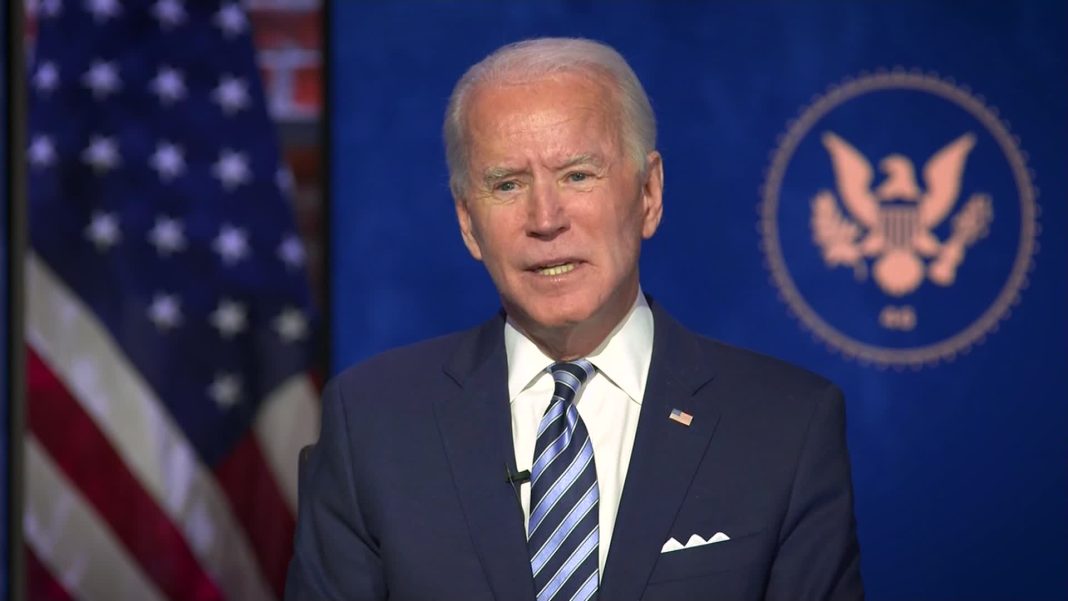
As the midterm elections draw near, President Joe Biden has delivered campaign-style speeches that misstated statistics on the COVID-19 pandemic, may leave the wrong impression that police officers were killed during the Jan. 6, 2021, attack on the U.S. Capitol, and overstated the impact of the Affordable Care Act.
The remarks were made in the battleground state of Pennsylvania and at events hosted by the Democratic National Committee. Biden has touched on these themes repeatedly, sometimes wording the claims differently.
Wrong COVID-19 Stats
In an Aug. 25 speech for a Democratic National Committee reception in Bethesda, Maryland, Biden made claims about the state of the country when he took office, greatly understating the supply of COVID-19 vaccines then and overstating the number of deaths overall from the disease.
According to a transcript posted by the White House, the president said: “When you got me elected the first time around, we had the — one of the highest unemployment rates in American history. We were in a situation where we were in significant debt. We had — well, there was — instead of dealing with the deficit, we were piling up the deficit. We were in a situation where we had only — only 2 million vaccines for the whole — for the entire country.”
Biden’s phrase “when you got me elected the first time around” made us wonder whether he meant his election as president in 2020 or his election as vice president in 2008. But the reference to vaccines indicates it’s the former.
What constitutes “one” of the “highest unemployment rates” may be a judgment call, but Biden’s remark could leave a misleading impression about just how bad the economy was doing when he became president. The unemployment rate was 6.7% in November 2020, the month of the election, and remained at that level the following month, according to the Bureau of Labor Statistics. That’s high, and we wrote the economy was “struggling” with “stalled” job growth when Biden was inaugurated. But there have been many times in U.S. history when the unemployment rate was much higher.
Only months prior, for instance, it was as high as 14.7% in April 2020. So it had dropped significantly since the beginning of the economic fallout from the pandemic. For all of Biden’s first term as vice president — a term that began during the Great Recession — the unemployment rate was higher than 6.7%, reaching a peak of 10% in October 2009. The rate was also higher than 6.7% in the mid-1970s, early and mid-1980s, and the early 1990s.
The unemployment rate now stands at 3.7%.
His remark about the deficit “piling up” is fair enough. We wrote at the time of his inauguration: “Biden inherits the biggest federal debt since World War II, and a treasury hemorrhaging trillions more in each year.”
But Biden’s comment that there were “only 2 million vaccines for … the entire country” is a head-scratcher.
The White House referred us to the DNC about his claim, but we haven’t received a response from the committee.
It’s true that the rollout of the COVID-19 vaccines began slowly. Vaccinations began after Dec. 11, 2020, with the Pfizer/BioNTech and then, a week later, Moderna vaccines. Demand was high, and the supply was low. But not as low as 2 million.
At the time, we wrote that at least 13.6 million Americans had received one or more shots on the day Biden took office, according to the Centers for Disease Control and Prevention, and 2 million of them were fully vaccinated with the two-dose regimen. Perhaps that full-vaccination figure is the source of Biden’s comment, but these numbers are continually updated as new data come in.
By May of this year, when we wrote about a false White House tweet on vaccine supply, the CDC statistics showed nearly 23 million vaccine doses had been administered and about 3.5 million people were fully vaccinated by the day of Biden’s inauguration. Even the CDC archived webpage from that day shows that nearly 36 million vaccine doses had been distributed to U.S. jurisdictions at the time.
We’ve written repeatedly about Biden’s misleading remarks about a low vaccine supply when he became president.
Biden also said that “100 million people” died of COVID-19, but even the global total is nowhere close to that figure. His remarks at another DNC event the same day indicate he may have misspoken.
Biden, Aug. 25, DNC reception: “I don’t think it’s an exaggeration to say that when you go through a period of such uncertainty where things that never happened really — not in our lifetime hadn’t happened before — when you have, you know — you know, 100 million people dying — I mean, dying.”
Global deaths are now at nearly 6.5 million, according to Johns Hopkins University & Medicine. There are more than 600 million confirmed cases worldwide, which is likely an undercount given the lack of testing availability early in the pandemic and the use of at-home tests this year.
Biden may have meant to say that 1 million people have died in the United States. The same day, at a DNC rally, he started to say “a hundred” and paused, saying instead “a million people died.” He then repeated the phrase “a million people.”
As of the end of August, 1,040,314 people have died from COVID-19 in the U.S., according to the CDC.
Attack on the Capitol
Rioters who stormed the U.S. Capitol on Jan. 6, 2021, injured approximately 140 law enforcement officers, according to a bipartisan report issued by two Senate committees.
Police officers were beaten with flag poles, pipes and bats, and hit with bricks, frozen water bottles and other objects tossed at them, the report said. Some officers were repeatedly pepper-sprayed.
No officers were killed during the attack, although one officer, Brian Sicknick of the U.S. Capitol Police, died of a stroke the next day and four others later committed suicide.
As Biden increasingly talks about “MAGA Republicans’” threat to democracy, the president often brings up the Capitol attack and has taken to telling a story that may leave the impression that several police officers were killed that day.
At the Aug. 25 fundraiser in Maryland, Biden recalled attending the G7 summit in England in June 2021 and coming away concerned about the impression the Capitol attack left on foreign leaders.
Five days later in Wilkes-Barre, Pennsylvania, Biden repeated the story about the G7 summit and rioters “killing several police officers” during an attack on Parliament.
As we said, police officers were brutally attacked on Jan. 6, 2021, but no officers were killed that day.
Sicknick — a 13-year veteran of the Capitol Police — collapsed when he returned to his office on Jan. 6, 2021, was taken to the hospital and died at about 9:30 p.m. on Jan. 7, Capitol Police said at the time.
District of Columbia Chief Medical Examiner Francisco J. Diaz said the autopsy showed Sicknick had no internal or external injuries and that he died of a stroke, not homicide — although he also told the Washington Post that “all that transpired [during the Capitol attack] played a role in his condition.”
Four other police officers committed suicide in the days and months after the riot.
A 51-year-old Capitol Police officer, Howard Liebengood, took his own life three days after the riots, and D.C. Police Officer Jeffrey Smith, 35, killed himself nine days after the riots. In July 2021, two other D.C. police officers who responded to the Capitol on Jan. 6 committed suicide.
For more about these and other deaths of those at the Capitol that day, see our article “How Many Died as a Result of Capitol Riot?”
ACA and Preexisting Conditions
It’s true that the Affordable Care Act prohibits insurance plans from charging more or denying coverage to those with preexisting conditions, in any insurance market. But Biden inflated the impact of the ACA, wrongly saying at the Aug. 25 DNC rally that “if you don’t have the Affordable Care Act, people … with a preexisting cannot get insurance.”
Plenty of Americans with preexisting conditions had insurance before the ACA.
The law’s impact in this realm was most acutely experienced on the individual market, where people without employer-based or government health plans buy their own insurance. Pre-ACA, insurance policies on the individual market could, and did, charge more, exclude certain benefits and outright deny insurance to people based on their preexisting medical conditions.
But those with employer-based plans had some protections before the ACA was enacted in 2010. Back then, thanks to HIPAA, the 1996 Health Insurance Portability and Accountability Act, employer plans couldn’t deny insurance to workers, or charge them more based on health status. But the plans could exclude coverage for a particular health condition for a limited amount of time — up to a year — if a new worker had about a two-month gap in insurance coverage within the year prior to being hired.
We’ve explained these details before, including when Biden made similar misleading claims about the impact of the ACA’s preexisting condition provisions.
About half of the U.S. population had employer-based coverage in 2020. It’s safe to say that the ACA’s protections have taken on greater significance during the coronavirus pandemic, as enrollment in ACA marketplace plans (which are part of the individual market) increased and many Americans may have experienced gaps in coverage with the pandemic-related economic upheaval. And of course the protections are reassuring for anyone who might leave, lose or retire early from a job and need to seek insurance outside the employer-based market.
But Biden is wrong to flatly state that without the ACA, those with preexisting conditions “cannot get insurance.”
The president also overstated the law’s impact at the DNC Aug. 25 reception, when he said “people didn’t know the only reason anyone with a preexisting condition could have health care was because of the ACA.” He went on to accurately state: “So, under the ACA, whether you have a preexisting condition or not, you get covered.”
Editor’s note: FactCheck.org does not accept advertising. We rely on grants and individual donations from people like you. Please consider a donation. Credit card donations may be made through our “Donate” page. If you prefer to give by check, send to: FactCheck.org, Annenberg Public Policy Center, 202 S. 36th St., Philadelphia, PA 19104.










